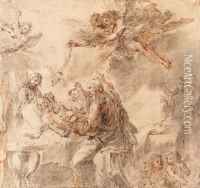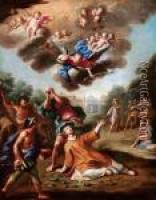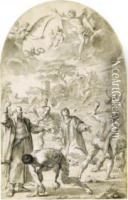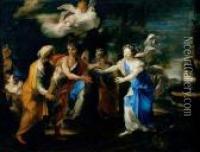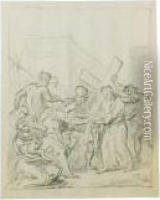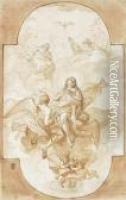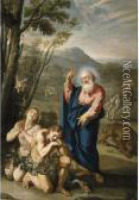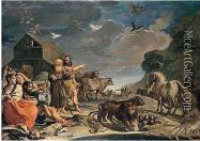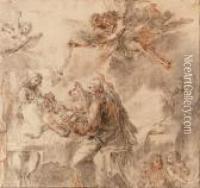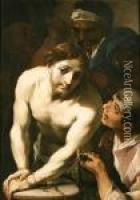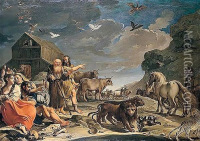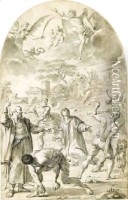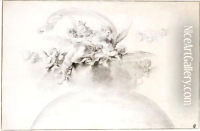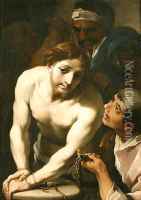Aureliano Milani Paintings
Aureliano Milani was an Italian painter and engraver, born in Bologna in 1675 into a family with a strong artistic background. His early training in art was guided by his relative, the painter Cesare Gennari, who was the last prominent member of the school of the Carracci, a powerful influence in Italian Baroque painting. Milani continued his studies under Giovanni Antonio Burrini and became familiar with the works of the leading Bolognese painters of his time.
His style was characterized by a strong draftsmanship and was influenced by the Bolognese classicism of the 17th century, as well as by the Roman baroque styles of painters like Carlo Maratta and Francesco Trevisani. Milani's works often included historical and mythological subjects, rendered with a sense of grandeur and clarity. He was known for his narrative skill and the ability to convey complex emotions and expressions in his figures.
After establishing his reputation in Bologna, Milani moved to Rome in 1707, where he became associated with the Accademia di San Luca, an important institution for artists. His time in Rome allowed him to study ancient art and the Renaissance masters, which greatly influenced his artistic development. Despite his success in Rome, Milani returned to Bologna in 1710, where he continued to work and receive commissions.
Milani was also an accomplished engraver and his prints contributed to the dissemination of the Bolognese style. He was respected as a teacher and had several pupils who would carry on his artistic legacy. Throughout his career, Milani also collaborated with other artists, including Sebastiano Conca and Giovanni Gioseffo dal Sole.
Aureliano Milani passed away in Bologna in 1749. His works remain an important part of the Italian Baroque era, and his influence can be seen in the subsequent generations of Bolognese painters. Today, Milani's paintings can be found in various Italian churches and museums, as well as in international art collections.
